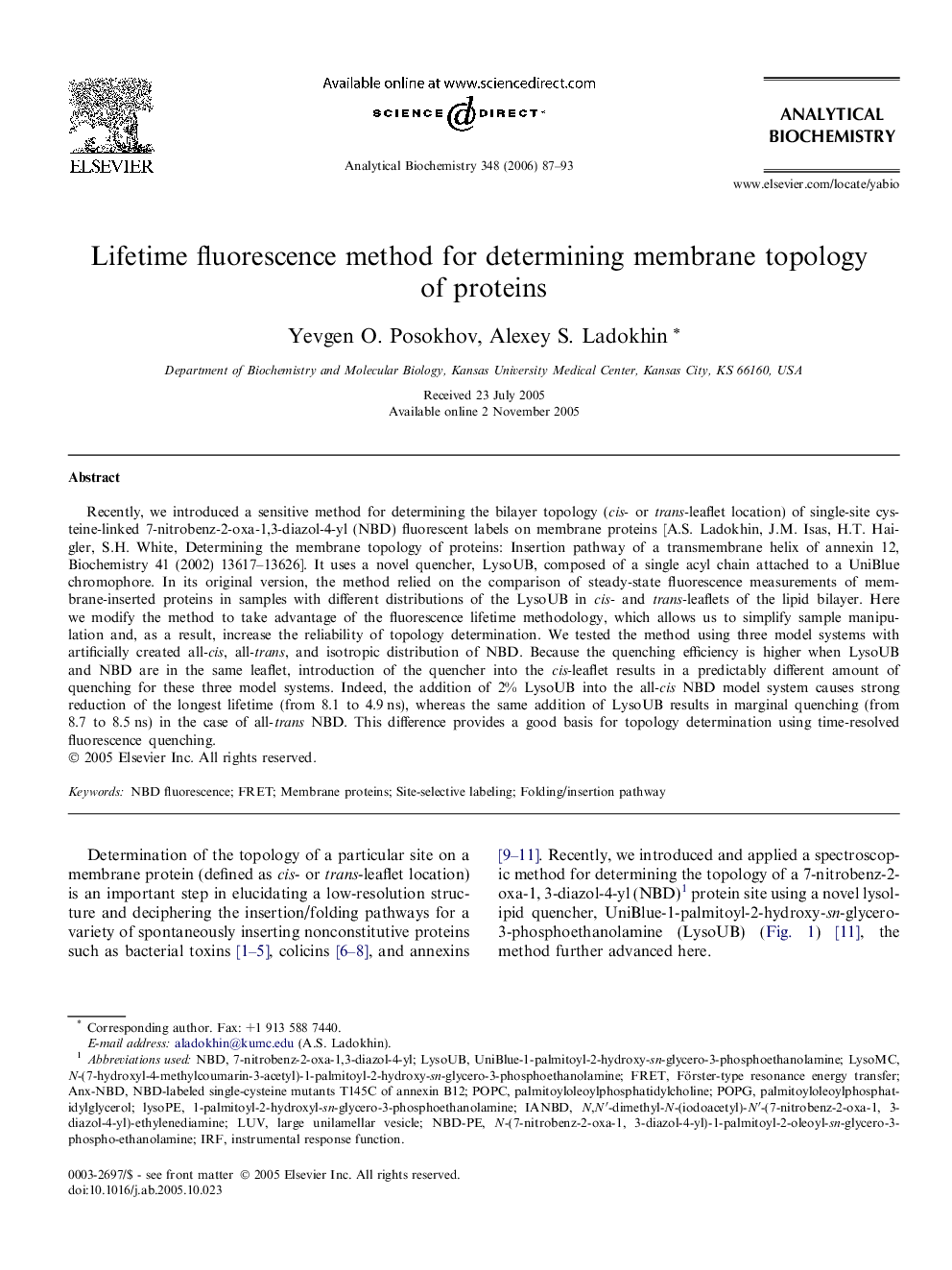| Article ID | Journal | Published Year | Pages | File Type |
|---|---|---|---|---|
| 1176782 | Analytical Biochemistry | 2006 | 7 Pages |
Recently, we introduced a sensitive method for determining the bilayer topology (cis- or trans-leaflet location) of single-site cysteine-linked 7-nitrobenz-2-oxa-1,3-diazol-4-yl (NBD) fluorescent labels on membrane proteins [A.S. Ladokhin, J.M. Isas, H.T. Haigler, S.H. White, Determining the membrane topology of proteins: Insertion pathway of a transmembrane helix of annexin 12, Biochemistry 41 (2002) 13617–13626]. It uses a novel quencher, LysoUB, composed of a single acyl chain attached to a UniBlue chromophore. In its original version, the method relied on the comparison of steady-state fluorescence measurements of membrane-inserted proteins in samples with different distributions of the LysoUB in cis- and trans-leaflets of the lipid bilayer. Here we modify the method to take advantage of the fluorescence lifetime methodology, which allows us to simplify sample manipulation and, as a result, increase the reliability of topology determination. We tested the method using three model systems with artificially created all-cis, all-trans, and isotropic distribution of NBD. Because the quenching efficiency is higher when LysoUB and NBD are in the same leaflet, introduction of the quencher into the cis-leaflet results in a predictably different amount of quenching for these three model systems. Indeed, the addition of 2% LysoUB into the all-cis NBD model system causes strong reduction of the longest lifetime (from 8.1 to 4.9 ns), whereas the same addition of LysoUB results in marginal quenching (from 8.7 to 8.5 ns) in the case of all-trans NBD. This difference provides a good basis for topology determination using time-resolved fluorescence quenching.
